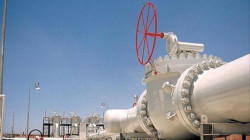There’s no relief in sight for high gas prices

Shafaq News/ With gas prices averaging nearly $4.50 per gallon, distraught drivers might feel they’re due for a break. But gas prices seem likely to go higher, and maybe break $5 on average, as Russian oil disappears from the market and producers struggle to keep up with demand.
“My expectation is it’s going to get worse for consumers,” Vicki Hollub, CEO of Occidental Petroleum, said at a May 13 online forum sponsored by the Dallas Federal Reserve Bank. “Spare capacity is at a multi-decade low. New production is insufficient to meet demand. Oil is going to continue to stay at high prices and gas prices will stay high, as well.”
Americans who have heard the nation is “energy independent” don’t understand why U.S. producers can’t just open the taps and bring prices down. But “energy independence” is something of a myth. Oil and many other commodities trade on global markets, with prices set by worldwide supply and demand. A supply or demand shock anywhere affects prices everywhere. U.S. drillers also overproduced oil and natural gas for several years, effectively subsidizing low pump prices from 2015 through 2020 by losing hundreds of billions of dollars. Industry executives insist those days are over.
President Biden has authorized a huge release of oil from the U.S. reserve, with other countries following suit. By November, that could add around 240 million barrels of oil to the world supply. That’s small relative to total oil consumption, but the International Energy Agency points out that crude prices have dropped by about $10 per barrel as the fresh oil has started hitting markets.
Supply is likely to get tighter, however, and demand could pick up as China emerges from the broad COVID-related lockdowns that have depressed economic activity there. That could cause price spikes worse than what we’ve seen so far this year. The embargo on Russian oil, following its Feb. 24 invasion of Ukraine, is sporadic, for now, with countries such as the United States, Canada and Australia cutting off Russian oil imports but many others still buying Russian oil. Russia is still earning nearly as much oil revenue as it did before its barbaric invasion, with some sales shifting to Asian customers.
The European Union is working on a Russian oil ban by year-end, which could trigger a price surge.
“We’ve only seen the beginning of this oil supply shock,” economist Lutz Kilian of the Dallas Fed said at the May 13 event. “This particular oil shock, if it were to happen, could be more severe than other oil supply shocks that have happened in the past. There is every reason to worry about the inflationary impact of the invasion of Ukraine in the medium to long term.”
Saudi Arabia and the United Arab Emirates are two countries that could easily pump more if they chose to. But they’re not. In fact, the OPEC alliance to which the two countries belong is pumping less oil than its most recent targets call for. Profits, meanwhile, pile up. Saudi oil giant Saudi Aramco just posted a huge $40 billion quarterly profit, benefiting, like other oil companies, from prices that have nearly doubled in the last 12 months.
The U.S. could see a modest uptick in oil production
Here in the United States, there is likely to be a modest increase in oil production. Rig counts are up and forecasters expect U.S. production to rise by about 1 million barrels per day, to about 12 million. But that would still be a million barrels short of peak production, which occurred at the end of 2019, right before the COVID pandemic hit.
The U.S. energy industry got crushed during the COVID downturn, with oil prices falling so deeply they briefly turned negative in 2020. And that came after several years of overproduction. Companies went bust, investors lost billions, workers left the field and surviving producers now focus on sending cash flow back to investors instead of adding new capacity.
“The downturn lasted too long,” Cindy Taylor, CEO of Oil States International, said at the Dallas Fed event. “We’ve permanently lost a lot of workers, and those are highly technical, highly demanding jobs. To think we can go much higher [on production] much quicker, it’s going to take a while and workers and supply chain challenges will be key to that."
Biden and many Democrats bash energy companies for enjoying surging profits while drivers suffer at the pump. Industry executives say their shareholders and investors deserve some return after several bruising years. They also argue that Biden’s green-energy focus scares off investors and lenders because the permanent decline of the oil and gas industry is basically U.S. government policy.
“The rhetoric from the administration does not help this situation,” Hollub said. “There’s an impact right now when you create the implied position that you don’t want the oil and gas industry to ever grow again.”
Many energy investors have shortened their timeframe for expected returns, forcing companies to spend more on dividend hikes and stock buybacks and less on new capacity.
The biggest development that would lower prices would be some sort of resolution in the Russia-Ukraine war that upheld Ukraine’s sovereignty while establishing a pathway toward the removal of sanctions on Russia. That seems unlikely any time soon, and mounting evidence of war crimes in Ukraine could make it difficult to lift sanctions as long as Russian President Vladimir Putin remains in power. If Putin departed, however, it would be a huge opening to end the war and begin patching the damage to global markets.
Oil and gasoline prices, meanwhile, would be higher still if the Chinese economy were back to normal, instead of reeling from mass COVID shutdowns. The Eurasia Group says subdued demand from China is providing a “ceiling” on oil prices, for now. But if China bounces back as the pinch on Russian oil tightens, that could be the formula for $5 gas.
In 2008, U.S. oil prices hit $145 per barrel, which would be $191 today, adjusted for inflation. Gasoline prices hit $4.11 per gallon, which would be $5.40 per gallon today. As painful as $4.50 gas might be, the historical data tells us it could easily go a dollar higher, or more.
Putin could prevent that, but Biden probably can’t.
Source: Yahoo Finance


